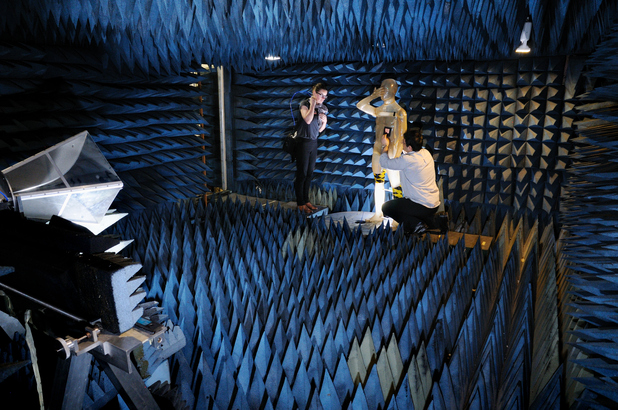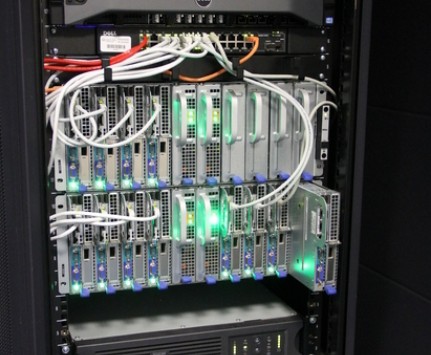 Menu
Menu
Queen Mary facilities
Antenna Measurement Laboratory

Propagation measurement for body-centric communications in the microwave anechoic chamber
The Antenna and Electromagnetics Group’s philosophy in antenna design has always been high quality electromagnetic modelling supported by high quality measurements and, over its 40 year history, it has built an extensive Antenna Measurement Laboratory (AML), which now covers the frequency band from 500MHz to 345GHz. Supported by three full-time technical staff, the facility is arguably one of the most comprehensive in a European university and includes:
- Microwave Compact Antenna Test Range (CATR)
- Millimetre-wave CATR
- Modular Quasi-Optical Test Bench
- THz Time Domain Spectrometer (TDS), up to 3 THz
- Mobile Antenna EMC Screened Anechoic Chamber
- General Purpose Anechoic Chamber
- NSI Planar Near-Field Antenna Measurement Scanner
- EMC Test Chamber
- Free-space material characterisation facility
- Body-Centric Wireless Sensor Lab
- Clean-Room and Circuit Printing Facilities (QM Physics Department)
Mechanical Workshop
An extensive mechanical workshop is associated with the AML providing most of the Group’s prototype manufacturing needs including a developing CAD/CAM capability supported by:
- NC milling machine
- NC lathe machine
- NC PCB plotter
Software and Computing
The Group has a range of in-house developed antenna design software, as well as commercial CAD/CEM and CAD/CAM software, including:
- Agilent ADS
- Ansoft HFSS
- FEKO
- CST – Microwave Studio
- Wireless InSite
- XGtd
- COMSOL Multiphysics
- MATLAB
- GRASP 8.0
- Autodesk Inventor 11
- Mastercam X2
- CircuitCAM Board Master
- National Instruments: Multisim & Ultiboard
The Group have two computational clusters for solving large electromagnetic problems and development of the in-house computational electromagnetics software:
- A small test-bed cluster for code development (512 GB of RAM and 128 cores at 2 GHz)
- A larger cluster for general use (currently 3584 GB of RAM and 224 cores at 2.2 GHz)
Shared access to the MidPlus consortium cluster, currently consisting of 30 TB of RAM and 1320 cores at 2.4 GHz and hosted by QMUL, is also available.

The 3.5 TB cluster
